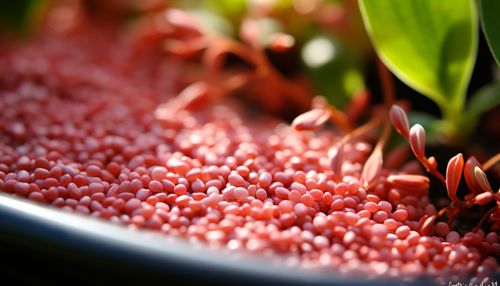Biofertilizers
Introduction
Biofertilizers are substances that contain living microorganisms which, when applied to seeds, plant surfaces, or soil, colonize the rhizosphere or the interior of the plant and promote growth by increasing the supply or availability of primary nutrients to the host plant. Biofertilizers add nutrients through the natural processes of nitrogen fixation, solubilizing phosphorus, and stimulating plant growth through the synthesis of growth-promoting substances Biofertilizers.
Types of Biofertilizers
Biofertilizers can be grouped into different types based on the type of nutrient they provide or the function they perform. The main types include nitrogen-fixing biofertilizers, phosphate solubilizing biofertilizers, and plant growth-promoting biofertilizers.


Nitrogen-Fixing Biofertilizers
Nitrogen-fixing biofertilizers are those that have the ability to convert atmospheric nitrogen into a form that plants can use. This group includes free-living bacteria such as Azotobacter and Azospirillum, and symbiotic bacteria like Rhizobium Nitrogen Fixation.
Phosphate Solubilizing Biofertilizers
Phosphate solubilizing biofertilizers are microorganisms that have the ability to convert insoluble forms of phosphate into simple forms. Examples of these include species of Pseudomonas and Bacillus Phosphorus Cycle.
Plant Growth-Promoting Biofertilizers
Plant growth-promoting biofertilizers are those that stimulate plant growth by synthesizing certain required growth substances and by suppressing disease-causing pathogens. Examples include species of Trichoderma and Pseudomonas.
Benefits of Biofertilizers
Biofertilizers provide several benefits to plants and to the soil. They enhance nutrient availability, increase plant growth, and improve soil health. They also have environmental benefits, as they reduce the need for chemical fertilizers and thus decrease soil and water pollution.
Enhanced Nutrient Availability
Biofertilizers increase the availability of nutrients to plants. They can fix atmospheric nitrogen, solubilize phosphorus, and mobilize other nutrients, making them more available to the plant.
Increased Plant Growth
Biofertilizers can stimulate plant growth by producing hormones and other growth substances. They can also increase the effectiveness of other fertilizers, leading to increased plant growth and yield.
Improved Soil Health
Biofertilizers can improve soil health by increasing its organic matter content and improving its structure. They can also increase the population of beneficial soil microorganisms.
Environmental Benefits
Biofertilizers can reduce the need for chemical fertilizers, leading to decreased soil and water pollution. They are also renewable and biodegradable, making them environmentally friendly.
Production of Biofertilizers
The production of biofertilizers involves the selection of effective strains of beneficial microorganisms, their mass multiplication in a laboratory, and their formulation and packaging into a usable product. The process requires specialized knowledge and equipment, and must be carried out under sterile conditions to prevent contamination.
Application of Biofertilizers
Biofertilizers can be applied to the soil or to the plant in a number of ways. They can be applied as seed inoculants, soil amendments, or as foliar sprays. The method of application depends on the type of biofertilizer and the specific needs of the plant.
Future of Biofertilizers
The future of biofertilizers looks promising, with increasing interest in sustainable agriculture and organic farming. Advances in biotechnology and microbiology are expected to lead to the development of more effective biofertilizers, and increased awareness of the benefits of biofertilizers is likely to lead to greater use.
